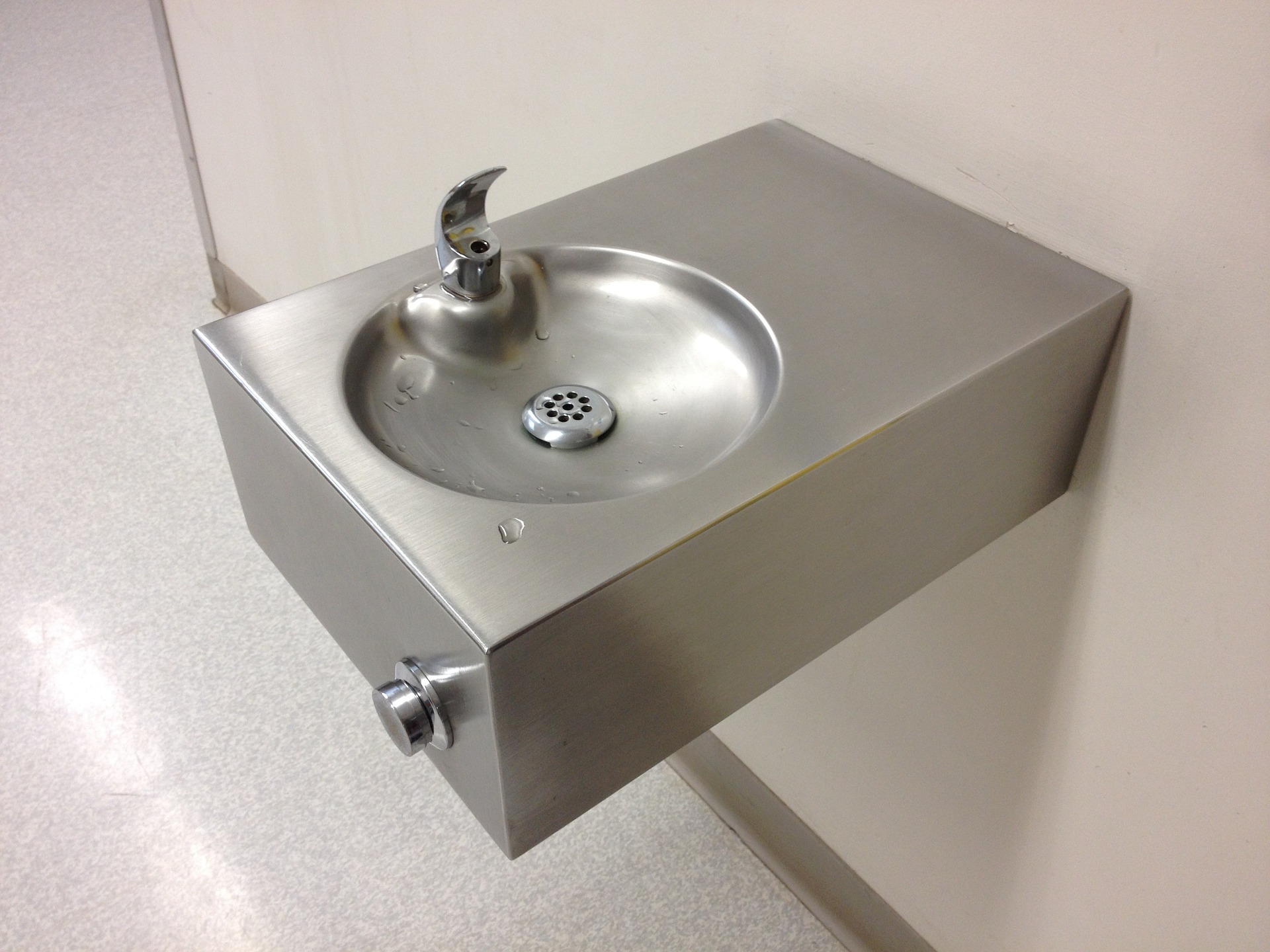By En Qi Teo, Staff Writer & Researcher for Save The Water™
A recent study, done by the Harvard T.H. Chan School of Public Health and the Nutrition Policy Institute at the University of California, found that over 40% of US public schools in 24 states have dangerously high levels of lead contamination in their water fountains.1 This was discovered after water samples were collected from schools and tested for lead content. An alarming 44% of schools had more than one water sample that was found to have higher-than-recommended lead levels.1
How does lead enter the water fountains?
When manufacturers use lead to produce parts of water fountains or taps, such as pipes or faucets, lead leaches into the water. Lead is a cheap material, and therefore has been used in the manufacturing of plumbing systems. As a result, pure lead service lines (LSLs) are estimated to be extremely common across America, including in many major cities. Additionally, the water chemistry, which is affected by the weather and changes in the distribution system, may also speed up corrosion.2 This is what results in higher-than-recommended lead levels being present in the water.
A history of contamination
Many may know about the current water crisis in Flint, Michigan. Sadly, the presence of lead in drinking water at schools is not new. By 1991, the issue had already attracted national focus, as American Health and Human Services Secretary L. W. Sullivan declared subtle lead poisoning the largest environmental threat to the health of American children.3
In 2004, a study found that almost 60% of Philadelphia schools had levels of lead in their water that exceeded the action level in Environmental Protection Agencies (EPA) guidelines.4 In 2009, The Associated Press conducted a study and found that at least 27 states in the US were affected by the problem of lead contamination.5 Furthermore, case studies of schools in Los Angeles, Washington D. C., Baltimore, and Seattle from 2010 have revealed that this problem has been around for almost a decade.5
Lead contamination also varies across school districts. Unfortunately, lead contamination disproportionately affects low-income, minority neighborhoods. This is because schools located in these areas tend to be older and have less budget allowance for the replacement of plumbing.3
What are the effects on children?
Lead poisoning negatively affects children in many ways. Past studies have found that there is no minimum level of lead in blood for poisoning to take effect. Rather, trace amounts of lead are sufficient to have an impact on children’s health. Unfortunately, these impacts scale up as the amount of lead in blood increases.
Exposure to high levels of lead may cause a variety of symptoms, such as fatigue, memory loss or general weakness. Prolonged exposure may cause brain and kidney damage, or even death.6 Additionally, lead contamination can cause problems with cognitive functioning. Some studies estimate that each microgram per deciliter of blood lead concentration cause a 0.25-point drop in IQ.7
Also, Children are most susceptible to lead poisoning, and most likely to experience negative effects from lead toxicity.8
Solutions
Experts have attributed the problem of lead in drinking water at schools to a lack of legislation requiring that schools test their drinking water for lead contamination.4 In a 2018 study, it was found that only fifteen states and the District of Colombia had laws that required schools to test their water supply. Moreover, many states implemented these laws recently and only after the Flint water crisis.4
Furthermore, this study also discovered that legislation alone is insufficient. Schools which have tested their water and found problems with lead contamination do not have the budget to replace their plumbing.9 Therefore, this is also a funding issue, and more needs to be done in consultation with the schools to ensure that lead is kept out of drinking water.
References
- Angie Cradock, et. al. January, 2019. “State approaches to testing school drinking water for lead in the United States.” https://cdn1.sph.harvard.edu/wp-content/uploads/sites/84/2019/01/Early-Adopters_State-Approaches-to-Testing-School-Drinking-Water-for-Lead-in-the-United-States_2019.pdf
- Siddhartha Roy and Marc A. Edwards. February, 2019. “Preventing another lead (Pb) in drinking water crisis: Lessons from the Washington D.C. and Flint MI contamination events.” Current Opinion in Environmental Science & Health, (7), 34-44. https://www.sciencedirect.com/science/article/pii/S2468584418300424
- Michael Emmett Brady. 1993. “A theoretical analysis of the environmental effects of lead contamination over time on IQ, education and crime in America: a viewpoint.” International Journal of Environmental Studies, 44(2-3), 189-201. https://www.tandfonline.com/doi/abs/10.1080/00207239308710860
- S. D. Bryant. August, 2004. “Lead‐Contaminated Drinking Waters in the Public Schools of Philadelphia.”Journal of Toxicology: Clinical Toxicology, 42(3), 287-294. https://www.tandfonline.com/doi/full/10.1081/CLT-120037429
- Yanna Lambrinidou, et. al. 2010. “Failing Our Children: Lead in U.S. School Drinking Water.” New Solutions, 20(1), 25-47. https://journals.sagepub.com/doi/abs/10.2190/NS.022010eov
- CDC. n.d. “Lead: Information for Workers.” https://www.cdc.gov/niosh/topics/lead/health.html
- Steven G. Gilbert & Bernard Weiss. September, 2006. “A rationale for lowering the blood lead action level from 10 to 2 μg/dL.” NeuroToxicology, 27(5), 693-701. https://www.sciencedirect.com/science/article/pii/S0161813X06001690
- A. L. Jones. January, 2009. “Emerging aspects of assessing lead poisoning in childhood.” Emerging Health Threats Journal, 2(1). https://www.tandfonline.com/doi/abs/10.3402/ehtj.v2i0.7080
- Ajay Kunapuli, et. al. “Perspectives on State Legislation Concerning Lead Testing in School Drinking Water.” November, 2018. https://centerforgreenschools.org/sites/default/files/resource-files/2018-Lead-in-School-Drinking-Water-Full-Final-20181108.pdf




